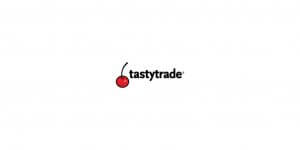Is the day of the Forex conference over? – Op Ed
Just how should the FX industry’s various components interact with each other? Equally importantly, how should the sales, marketing, research and development and senior executive teams of each company get their message across to their potential audience, and sell their products into the key target companies within their sector? A few years ago, the concept […]

Just how should the FX industry’s various components interact with each other?
Equally importantly, how should the sales, marketing, research and development and senior executive teams of each company get their message across to their potential audience, and sell their products into the key target companies within their sector?
A few years ago, the concept of business to business FX industry conferences was born, and was embraced by a vast number of companies in this industry from technology vendors, to signal providers, to brokers themselves, all of whom rallied to set up sponsored booths alongside digital marketing firms specializing in FX branding and positioning, prime brokerages and liquidity firms all vying for business on the floors of exhibition halls across the world.
It’s now a very small world
Prior to the proliferation of industry conferences which have punctuated the calendar for the last half-decade, if a company wanted to add a specific service to its product offering, or if a new marketing technique was required, the senior management would have had to go onto the website of a company which provides the required service, and then request information in a very faceless manner.

The conferences have brought the industry together. Now, everybody knows each other personally, and it is entirely possible to meet in Mexico, New York, Limassol, London, Barcelona or Shanghai, sit down for dinner and discuss the entire persona of the FX industry and who does what.
This has been the largest value of conferences thus far.
A brave new world – No need to leave your seat
Today, things are somewhat different to how they were five years ago, in that two major factors have become evident across many firms. The first of these factors being that after spending between $10,000 and $40,000 (!) per event on conference sponsorship and participation, the general consensus is that whilst such events increase physical presence, and allow the industry leaders to socialize, network and catch up with each other, very little actual business can be done, therefore the return on investment is so low that it is becoming less justifiable to spend this much, plus the cost of traveling to the event, and the opportunity cost which arises from having an executive out of the office for up to one week.

The second factor is that we live in a world now where every piece of information is at our fingertips, including the ability to interact with other industry executives via multimedia platforms, create short videos and broadcast them, organize virtual meetups via platforms such as Google Hangouts, brand themselves via high resolution dynamic images on modern websites which are graphic-orientated rather than a plethora of sleep-inducing information.
So advanced is the e-commerce industry in getting its message across – passively or interactively – via new media, that nobody needs to leave their seat today in order to interact with those who are their target audience. They can even demonstrate their products in this format, which is a far more effective method of doing so than in a crowded arena with a plasma screen on the wall.
The antidote to insomnia vs the stimulating and engaging
Networking and maintaining contact is a very important facet of this business as it contains so many different layers, however the new media applications for this are numerous, and highly engaging, as are round table discussions and free-format debates.
….and then there is the panel discussion.
Panel discussions remain a major fixture at all industry conferences, usually moderated by an impartial entity, and populated by a series of professionals who represent the same sector, but within different companies.
Taking the raw components – four or five rivals in the same positions but representing different firms, a very poignant subject, and a knowledgeable audience – this should be a recipe for edge-of-the-seat debate and long memorable anecdotes. It does not generate any business at all, and eats into valuable networking time, but if it really moved the business forward then it would have value.
Instead, subjects are often provided, and those participating have several weeks to revise and rehearse their answers to specific, pre-set questions, as if read from an auto-cue. Once these have been sanitized, passed through various marketing, compliance and surgical-glove-sterile corporate affairs firms, the same anodyne answers are trotted out with no interaction.
It is highly likely that regular attendees at conferences cannot remember what was discussed one day later, and therefore have to refer to my various live coverage of conference panels across the globe in order to recount the full agenda.
But where is the value in this? It is resource-hungry, takes weeks to prepare, is expensive, and ultimately forgettable, plus the end user does not attend, therefore the message is often falling on the incorrect ears.
The effort required and the end result is rather like shouting into a megaphone on a windy sports field with the loudspeaker switched off.
It is very likely that the new methodology will be more effective in future, companies should look toward using free, new media solutions to broadcast their message to their global audience who are far and wide, not just those who can afford a plane ticket to attend a conference, most of whom are B2B and therefore not the target audience.
Round table discussions, televised media, ad-hoc debates on specific subjects, and, of course, it is healthy for the industry for those with an opinion to put it out there to everyone – this is how we move ourselves forward and innovate, and most importantly, it is how we all remember who stands for what, and why!









